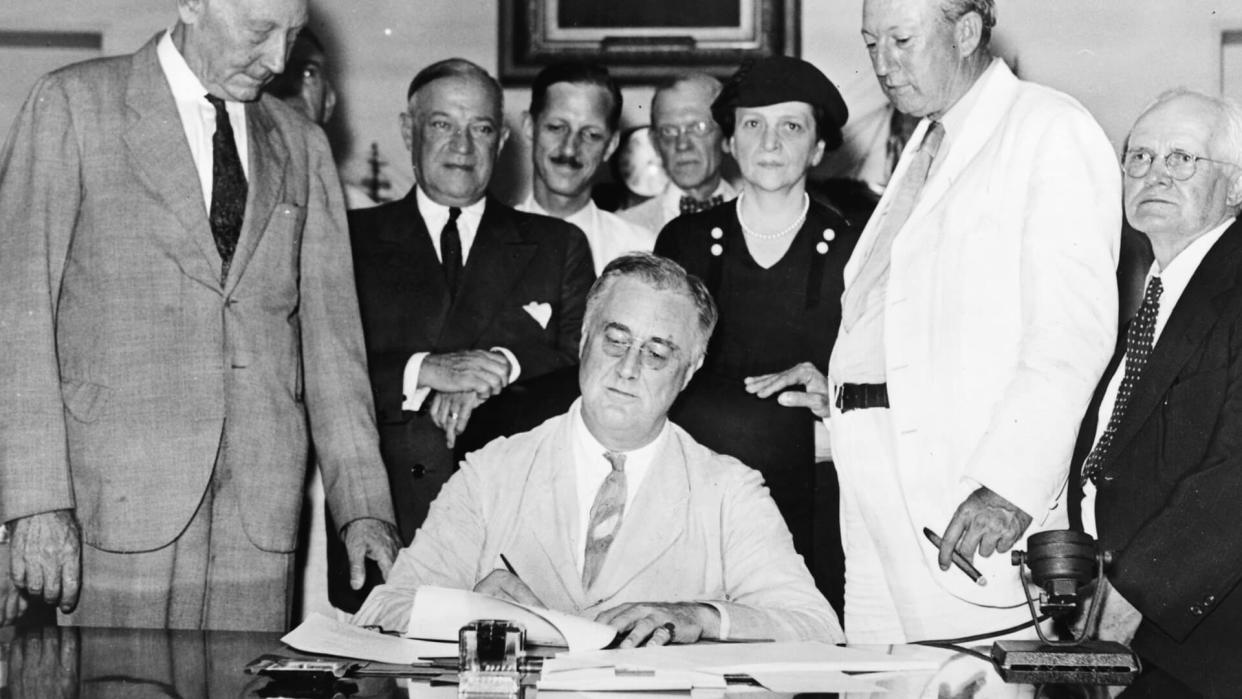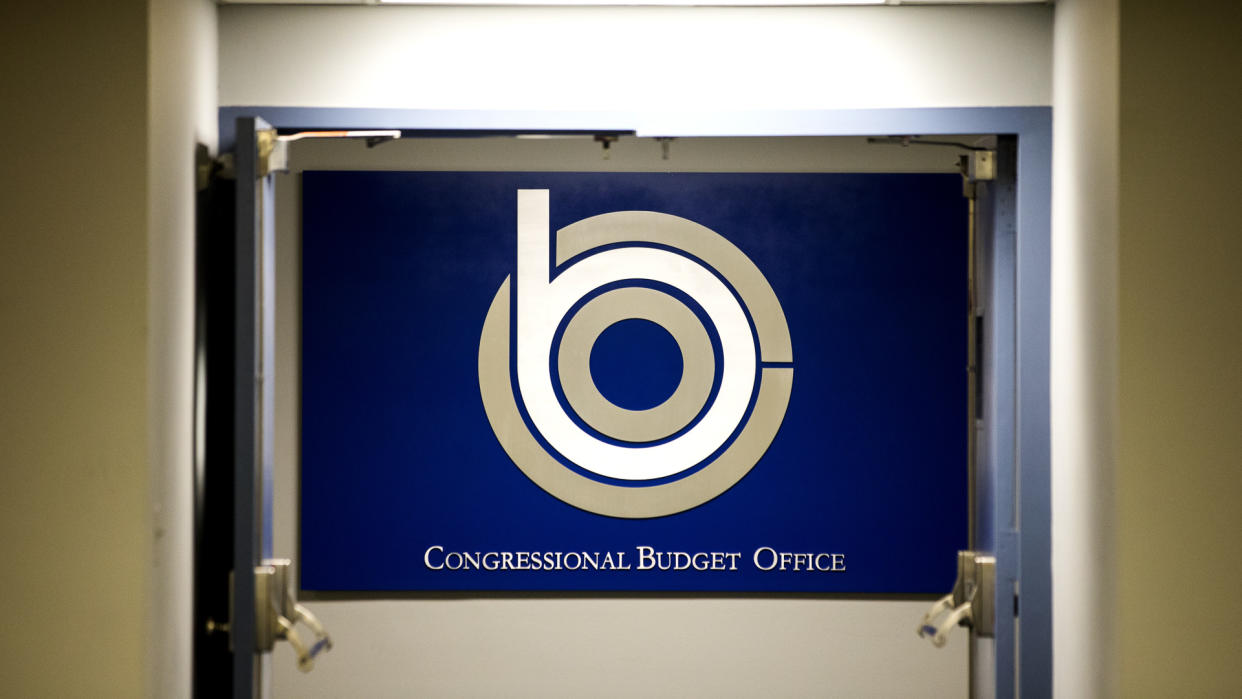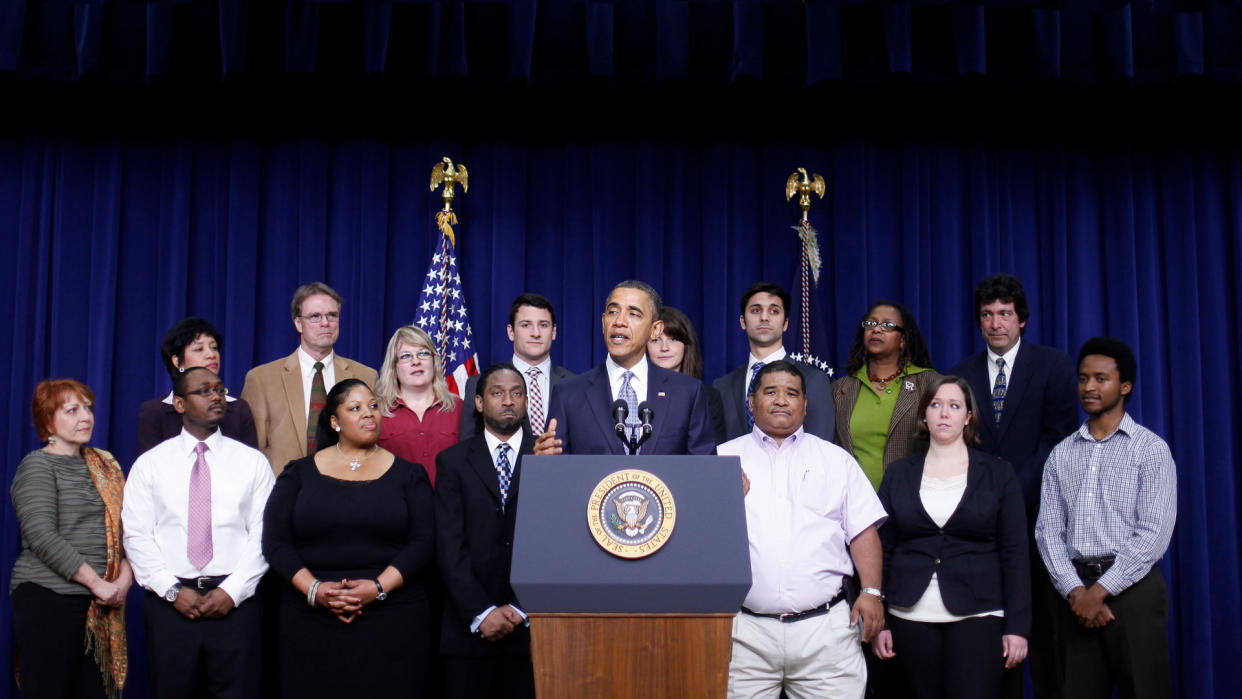The Rich Are Costing Social Security Billions a Year

Social Security is expected to deplete its $2.9 trillion reserve fund by 2035, according to Barron’s. As benefits will begin to exceed the amount of money paid into Social Security in 2020, people want to know what will become of Social Security in the future.
Save: Americans’ Savings Drop to Lowest Point in Years
Social Security is a publicly funded federal program that’s intended to provide some of society’s most vulnerable members with a certain level of financial security, but there could be problems in the future if a solution for the previously mentioned problem isn’t found. With that in mind, many people are looking to the rich as a source of potential tax revenue for the program. As it seems now, much of their income that goes untaxed for Social Security could be costing the program some major money.
Last updated: Feb. 24, 2021

Understanding the Payroll Tax Rate and Cap
Social Security is primarily funded through a payroll tax. Payroll taxes refer to a group of federal employment taxes that are directly linked to a company’s payroll. These taxes are typically withheld from paychecks, and the amount paid depends on an employee’s earned income.
The Social Security tax within the payroll tax is subject to a wage base limit, which is effectively a cap on the amount of earned income that’s subject to the tax. The limit is adjusted nearly every year for inflation. The wage base limit for Social Security tax in 2020 is $137,700 — any amount of earned income above this won’t be subject to Social Security withholdings for the year.
Knowing about this cap, you might start to wonder about all the money earned over that amount that is going untaxed and could be funding Social Security and more.

Everything the Payroll Tax Funds
There are three main federal payroll taxes: Social Security tax, Medicare tax and Federal Unemployment tax. Some of these taxes may be referred to by different names at times. Social Security also goes by the OASDI tax, which is short for Old Age, Survivors, and Disability Insurance. The Federal Unemployment tax also goes by the FUTA tax, which is short for the Federal Unemployment Tax Act. These items all together as the payroll tax might be referred to as FICA taxes, which is short for the Federal Insurance Contributions Act.
The various taxes included in the federal payroll tax are paid at different rates and split between employers and employees differently. The Social Security tax is generally levied at 12.4%, which is split evenly between employer and employee. The Medicare tax is normally levied at 2.9% for most people, and it too is split evenly. High-income earners are subject to a 0.9% additional Medicare tax. The Federal Unemployment tax is generally levied at 6%, and it’s paid by the employer.

Why Is There a Cap on the Payroll Tax?
You might be wondering why people are only taxed by the payroll tax on their earnings up to $137,700 and not anything they make that’s more than that. According to the Social Security Administration, President Franklin D. Roosevelt’s initial proposal for a Social Security program and corresponding tax actually excluded most high-income workers from the tax altogether. Anyone who performed nonmanual work and earned more than $250 per month was exempt from the first proposal.
As the proposal proceeded through the House Ways and Means Committee, though, the exemption was changed to a taxable maximum of $3,000 in earnings. This amount was adjusted on an ad-hoc basis until 1975. Since then, the taxable maximum has generally changed in correspondence with the average wage increase each year.
Find Out: Are You Eligible for a Third Stimulus Check – and If So, When Will You Get Yours?

How Much Money the Payroll Tax Brings In
Payroll taxes are the federal government’s second-largest source of revenue. The taxes brought in $1.243 trillion in 2019 and are expected to bring in $1.3 trillion in 2020, according to the Congressional Budget Office at the time of writing.
But the real questions here are, how much money is going untouched and how much money could the payroll tax bring in if it taxed the wealthy and their higher earnings?

How Much Money Is Untouched by the Payroll Tax
According to the Congressional Research Service, Social Security tax covered about 92% of earnings when the tax was initiated in 1937. Since 2000, the amount of earned income that was taxed fell to 83% by 2000 and has fluctuated with economic cycles since then.
Moreover, the above-cited numbers don’t consider unearned income. For many high-income individuals and families, unearned income from investments accounts for a large portion of their income.
So, with all this untaxed money, how much could the rich be costing Social Security?
See: 17 Tips To Live Off Just a Social Security Check

How Much Money Could Go To Social Security
Precisely how much money a revised Social Security tax could raise depends on the specifics of the plan. One proposal is the Social Security 2100 Act, which would be a major overhaul to the system. The act includes changes to benefits calculations and an across-the-board increase on what percentage of earned income below the taxable maximum is taxed. It also includes a tax on any earned income that exceeds $400,000.
As the Committee for a Responsible Federal Budget reports, the Social Security 2100 Act tax increase would total the equivalent of a $4.7 trillion tax increase through the next decade, although revenue would be closer to $1.5 trillion through 2029. For each year, that’s an additional $150 billion that could be going to Social Security if people were taxed on higher earnings than they are now.

The Payroll Tax Cap Hasn’t Kept Pace With Earnings Growth at the Top
In its report, the Congressional Research Service explains why the percentage of earned income that’s subject to the Social Security tax fell from the 1980s to 2000. Salaries for the highest earners grew faster than the pay of workers whose income fell below the taxable maximum. So because those at the top started earning more money so quickly, so much more of that money has been and is continuing to go untaxed instead of helping to fund Social Security.
Since that fast growth from the 1980s to 2000, the taxable percentage has mostly followed major economic cycles.

How Quickly the Richest Reach the Tax Cap
Analyzing the average wages of some high-income earners, Forbes estimates that 211 people who earned over $50 million in 2018 would likely have paid their full Social Security tax for the year within 12 hours of the new year.
The Los Angeles Times notes that nearly another 1,000 people would’ve probably paid their full Social Security tax by Thursday — the first working day of the year. Safra Catz, the CEO of Oracle Corporation and one of the two highest-paid CEOs in 2019, likely paid her full Social Security tax burden before noon on New Year’s Day, according to Forbes.

Is the Answer To Lift the Cap?
While lifting the cap on Social Security taxable income might seem like a simple answer, the solution isn’t entirely clear-cut. This is a complex issue, and knowledgeable people have approached the matter in multiple ways. Although some believe taxing the rich on their higher earnings is the right way to go, many have shown that lifting the cap has both benefits and downsides.
Check: The Average Social Security Check the Year You Were Born

Pro: Increase Social Security Revenue
Lifting the cap on taxable income would most certainly increase how much revenue Social Security receives each year. No matter how the program is approached, this is almost a necessary part of any solution that makes Social Security financially viable in the long term.
If nothing is done to the program, the Social Security Board of Trustees projects that the program will only have enough funds to cover 75% of its costs by 2035.

Pro: Tax Burden Would Be More Evenly Distributed
As the disparity between high-income earners and average workers has grown, so too has the difference in what percentage of income the two groups pay toward Social Security. Eliminating the tax cap altogether would better ensure everyone paid the same percentage of earned income toward the program.
Prepare: 6 Career Mistakes To Avoid During an Economic Downturn

Con: It Only Taxes Earned Income
As helpful as it may be, changing or removing the Social Security tax cap only alters how much earned income is taxed. This change alone won’t tax unearned income, which many high-income individuals have and low-income individuals frequently don’t have.

Con: Doesn’t Address Program Costs
With regard to Social Security’s long-term financial challenges, raising the taxable maximum without altering the benefits calculations doesn’t extend viability by too long. If high-income earners paid into Social Security based on all of their income, the current benefits calculations would award these earners large payments when they qualified to collect through the program.

Con: Could Change the Program Fundamentally
If the Social Security benefits calculations were substantially changed, the program could be changed at a fundamental level. Right now, the program is a form of insurance for people who work (and their dependents) in the event that they can no longer work. Revised calculations that had high-income earners paying more in but not collecting more would be redistributing some wealth.
Find Out: Biden Wants to Shut Down Credit Bureaus – What Would That Mean for You?

Where Politicians Stand on the Payroll Tax
Politicians have varying approaches to payroll taxes and Social Security. Here’s a look at where some of them stand:
President Donald Trump has said he’s not considering payroll tax cuts, but he’s been inconsistent on the issue.
Joe Biden said in 2018 that Social Security “still needs adjustments,” which The American Prospect translates as a Washington euphemism “for a balanced package of increased revenues and benefit cuts.”
Pete Buttigieg has proposed raising the payroll tax cap for Social Security to about $250,000.
Sen. Bernie Sanders has introduced legislation to apply a Social Security tax on earned income over $250,000 and investment income over $200,000 (for individuals) or $250,000 (for couples).
Sen. Elizabeth Warren has a plan to expand benefits for most people while eliminating the Social Security tax cap and adding an investment tax.

The Future of the Payroll Tax
A lot of money that’s being made by those who are richer is going untaxed by the payroll tax — and that could play an important part in helping Social Security to survive. The future of the payroll tax is far from certain, and what becomes of it will likely largely depend on which political leaders are elected. One way or another, though, the program — and the Social Security tax — will likely change in the future.
More From GOBankingRates
Pictured: President Barack Obama speaks to continue to push Congress to act to extend the payroll tax cut
This article originally appeared on GOBankingRates.com: The Rich Are Costing Social Security Billions a Year
